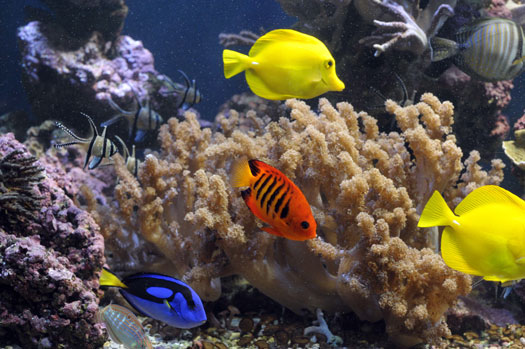- Your shopping cart is empty!
How Long Does It Take for Good Bacteria to Grow in a Fish Tank?

All new aquariums go through a period of either very slightly to pretty cloudy water when the tank is being set up, or “cycled.” This is evidence of bacterial bloom, and it’s necessary for fish. Like any ecosystem, an aquarium will go through cycles, and it’s up to fish keepers to enable them for the purpose of promoting the growth of beneficial bacteria and removal of harmful microorganisms and toxins. Understanding these cycles is essential knowledge for aquarists.
The Nitrogen Cycle
When setting up a tank—and after the water has been “inoculated” with a bottle of live bacteria like Nite-Out Living Bacteria (https://www.aquaticwarehouse.com/index.php?route=product/search&search=night&category_id=0)
administered the same day as the fish are introduced—a bacterial colony of organisms that breed on oxygen will form.
The Nitrosomonas bacteria purify freshwater by consuming ammonia, a natural waste product evacuated by fish. The initial bacterial bloom can last about 48 to 96 hours, during which the water will turn cloudy. The goal is to have very low levels of ammonia and nitrites that bacteria convert into nitrates, so start with a minimal amount of fish and feed them sparingly. One recommendation is to start off with a pair of hardy fish and keep them for at least two to three weeks before adding other species. In some cases, it may take up to six weeks.
Nitrobacter
This microorganism feeds on nitrites and will also convert it into healthy nitrates released into freshwater. Compared to Nitrosomonas, it takes longer to form colonies and doesn’t appear until later in the nitrogen cycle. Nitrobacter is an advantage saltwater aquarium keepers have because of “live rock,” which are pieces of coral that support these colonies. Nitrobacter don’t move on their own, and it’s for this reason they’re trapped in the filter through the aeration process.
Testing the Water
The healthiest aquariums have zero ammonia and nitrites while seeing a slight rise in nitrates. A chemical test doesn’t measure bacterial volume, but it does indicate the microorganisms are doing their job. Water testing is a key aspect of keeping aquariums. It’s highly recommended to understand the measurements or at least take a water sample to an aquarium supplier for testing and advice.
Transplanting Bacteria
Once a tank has completed the nitrogen cycle, it’s defined as an established tank with ammonia levels near zero. Taking some water out of an established tank and pouring it into a new one can speed up the nitrogen cycle. Another method would be to insert established biofilters that good bacteria colonies have attached themselves to. Finally, there are also bottled products that contain beneficial bacteria for aquarium water. These are entire colonies of Nitrosomonas and Nitrobacter, but it should be noted that changes in temperature when transporting these products could affect the health of the microorganisms. In other words, aquarists should always test the ammonia levels and never take things for granted.
At Aquatic Warehouse, we can provide the beneficial bacteria you need to maintain your aquarium. We also carry a wide array of essential supplies for fish tanks, from aquarium monitors and controllers to protein skimmers and testing kits. Check out what we have to offer on our website, stop by our store in Kearny Mesa, or give us a call at 858-467-9297 if you have any questions.
